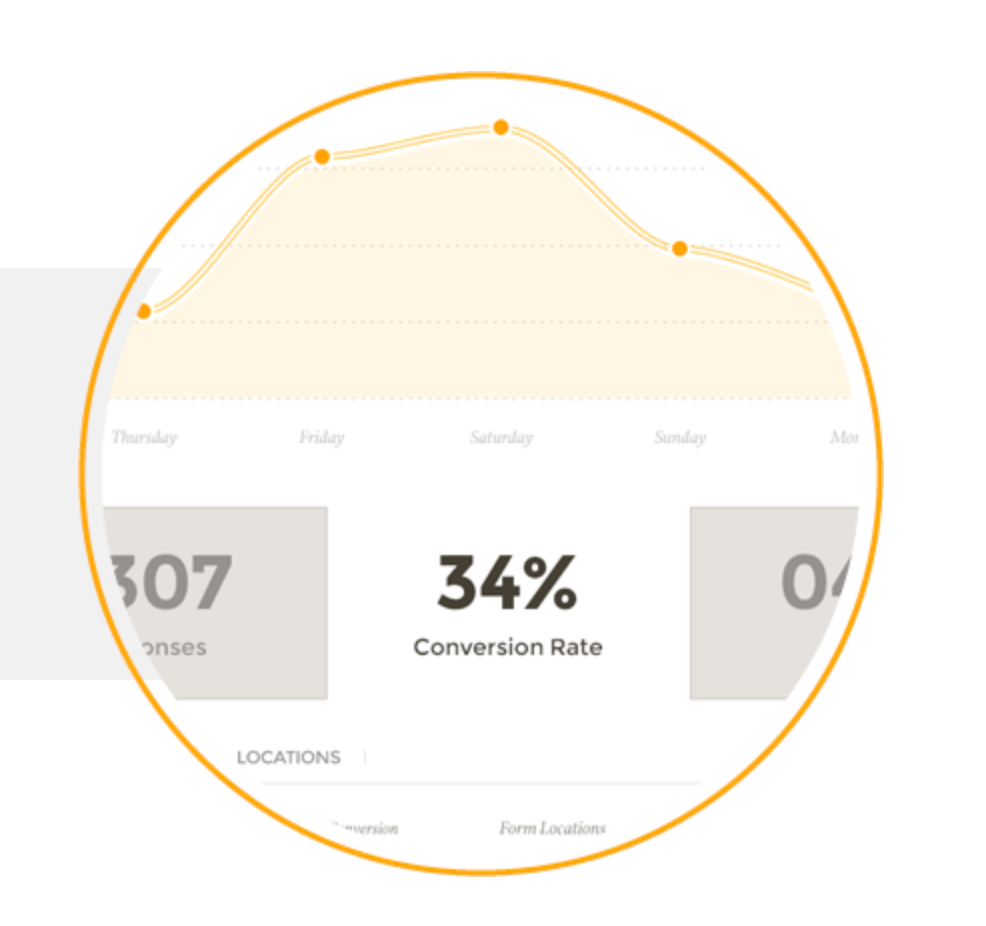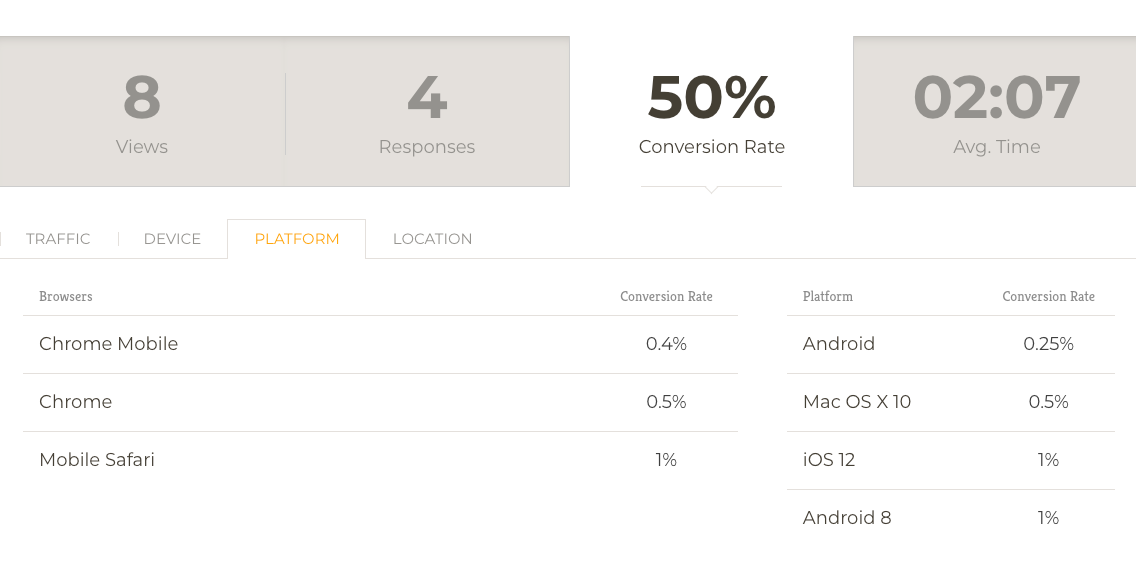Imagine you’re the chef of an award-winning restaurant. The season changes and you add a new steak dish to the menu. Weeks go by and practically no one orders it. The customers who do, never order the dish again.
As chef, this information would be valuable. You’d either nix the dish or figure out why it’s not selling — and fast. Maybe the majority of your diners are vegetarian, or maybe the waiters are forgetting to highlight the new special. The more information you can gather, the better your ability to make informed decisions.
Like restaurants, businesses face tough margins. To stay competitive, it’s essential to build a data-driven culture, which means using data, rather than simply intuition, to make decisions. You may think you know what users want, but if the numbers show otherwise, it’s crucial to dig deeper to discover what went wrong.
There are a host of benefits to building a data-driven culture. Don’t just take my word for it — consider the research:
- Tech Crunch reports that data-driven organizations have a 5–6 percent higher output and productivity than their less data-driven counterparts. They also have higher asset utilization, return on equity and market value.
- According to a PwC survey of over 1,000 senior executives, data-driven organizations are three times more likely to report significant improvements in decision-making.
Here, strategies for making data a central tenet of your organization.
How to build a data-driven culture
In a data-driven organization, all decisions are grounded in data. It’s more a mentality than a procedural step, and cannot be implemented from one day to the next. Instead, leaders should take a multi-pronged approach to gradually shifting their organization’s culture.
1. Start with leadership
As Harvard Business Review contributor David Waller explains, “Companies with strong data-driven cultures tend [to] have top managers who set an expectation that decisions must be anchored in data — that this is normal, not novel or exceptional.”
Though we often imagine leaders acting on their experience, strong judgment and vision alone, top leaders recognize the importance of incorporating data into their decisions — both to improve their quality and to exemplify the behavior they’d like employees to emulate.
You might wonder: how can managers do that in practice?
In order to demonstrate decision-making based on data rather than intuition, TechCrunch recommends cultivating a culture of objective experimentation, using techniques such as A/B testing — A/B testing is a method of comparing two versions of a webpage or app against each other to determine which one performs better.
At Jotform, we encourage both our employees and our customers to perform A/B testing. Every product or update we release goes through one or more rounds of A/B testing to identify potential issues before the full release.
In the 14 years since Jotform’s launch, our home page has gone through various iterations. It’s not just the face of our company, it’s also an example of the product we provide — forms. With stakes this high, it’s crucial to get them right. That’s why our engineers use our form analytics tool to analyze traffic, understand customer behavior and how they interact with our home page forms and get critical insight on important metrics like conversion rates.
2. Create a “master” data source
Oftentimes, the issue isn’t lack of data — it’s which data to use. When decision-makers throughout an organization rely on different sources of data, they run into huge, potentially costly problems stemming from inconsistency. As one Forbes contributor explains:
“The influx of data silos at data-driven companies is creating a ‘Tower of Babel’ syndrome where different teams are unable to collectively build the business because they don’t share the same data language.”
To address this issue, organizations can create a master data source, also known as a “single source of truth.” That way, stakeholders are guaranteed to be using the same information. Also, data within your “master” source is more likely to be reliable, organized and fit within the larger context of the business. Employees will know where to look for information immediately.
For example, at WeWork, employees use a table called the “activity stream,” where they can find web page views, office reservations, tour booking, payments, and other relevant data. This holistic data source ensures that decision-makers across the globe are on the same page, and enables them to spot patterns in different segments of the business. Not to mention, it’s easy to use.
Likewise, Jotform’s Form Analytics gives users one source for various types of demographic information about customers: location, platform, conversion rate, time on form, device used, and more.
3. Ensure broad availability
One of the biggest misconceptions about data is that it’s only useful for analysts and top-level executives. To become a data-driven company, everyone should have access to data, especially in the areas that pertain to their job.
Take Sprig, a San Francisco-based food delivery startup. The company’s chefs use an analytics platform to understand which meals and ingredients have done well and tweak the menu accordingly.
Giving employees the tools they need to make decisions with confidence will also increase their and the organization’s efficiency.
4. Ensure high-quality data
This may seem obvious, but you’d be surprised to learn how many companies get snagged by bad data. According to Harvard Business Review, a recent Gartner study found that firms lose an average of $15 million per year due to poor data quality. Another study looked at a leading retailer and found that 65% of the retailer’s inventory data was inaccurate.
How can anyone be expected to make good decisions based on faulty data?
Simply put, we can’t. To ensure better quality data, Harvard Business Review recommends continually revisiting these four factors: how data was sourced, how it was analyzed, what’s missing from the data, and how we can use the data to improve products and our business models.
5. Train employees to use data
To incorporate data into decision-making, you have to understand it. Short of a master’s degree in data science, there are plenty of options for becoming more fluent in data: like an online business analytics course or live training sessions.
Organizations can also create and disseminate useful resources — like what Tech Crunch calls a “data dictionary”: a “glossary with clear, unambiguous and agreed-upon definitions,” made after consulting with key stakeholders and business experts.
It takes an investment of time and energy to become a data-driven organization. Hopefully, with these strategies, the improvements in your decision-making will be well worth any expenditure.
Albert Einstein once said,
“The intuitive mind is a sacred gift.”
Let data enhance that gift.














Send Comment: